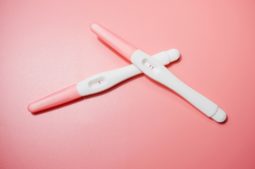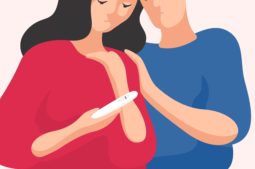
- The DuoStim protocol consists of stimulating the ovaries at two different stages within a single menstrual cycle
- IVI is the first to compare DuoStim results with those of two conventional non-consecutive stimulations, which found a near 50% reduction in the amount of time required to obtain a healthy embryo
- DuoStim is proposed as a major advance for patients with poorer prognoses, who may need to accumulate oocytes, and embryos, to perform pre-implantation genetic testing
At the 37th Annual Congress of the European Society of Human Reproduction and Embryology (ESHRE), IVI presented a pioneering new study analysing the DuoStim protocol: a treatment protocol consisting of two consecutive ovarian stimulations within a single menstrual cycle.
For the first time in a clinical research setting, outcomes of double ovarian stimulation (DuoStim) were compared with those obtained with two non-consecutive conventional stimulations. Between these two treatment protocols, the study found meaningful differences, specifically in terms of the time taken to achieve a healthy embryo. The research demonstrated that DuoStim shortened the time between undergoing ovarian stimulation to achieving a healthy (euploid) embryo by 50%.
For patients for whom time is a more critical factor in their outcomes, this protocol is a highly effective tool to accumulate both oocytes, and embryos, in a much shorter amount of time when compared with conventional phases of ovarian stimulation.
Double stimulation for patients with low ovarian reserves
On Tuesday 29th July 2021, Dr María Cerrillo, Consultant Gynecologist at IVI Madrid, presented to study to ESHRE entitled: “The DuoStim strategy shortens the time to obtain an euploid embryo in poor prognosis patients: a non-inferiority randomized controlled trial”.
The DuoStim strategy is a solution designed primarily for female patients who respond poorly to controlled ovarian stimulation. In such cases, the ovaries produce fewer eggs than required to proceed in a fertility treatment and may indicate a higher dose of stimulation is needed. For these patients, it is important to accumulate as many oocytes as possible. The DuoStim regime may also be particularly beneficial for those recommended to screen embryos using Pre-Implantation Genetic Testing for Aneuploidy (PGT-A) , such as women of advanced maternal age or with a history of recurring miscarriage or unsuccessful IVF treatment. In these circumstances, it is optimal that the highest number of embryos are achieved in a shorter time. Optimising the time taken to obtain oocytes and embryos is therefore essential for patients with more severe prognoses, in order to improve the likelihood of achieving a healthy pregnancy and live birth.
Healthy embryos in half the time
In order to carry out this study, 80 patients were initially recruited. The characteristics of the patients were very similar: over the age of 38 years old, mean AMH 0.92, similar BMI and similar antral follicle count (AFC). Each patient had previously been recommended to consider pre-implantation genetic testing due to their specific circumstances. From these patients, 54 were selected for the study. Two groups were then formed, with 27 patients in each group: one group following the DuoStim protocol and the other undergoing two non-consecutive conventional stimulations. IVI began to analyse the effects of the different ovarian stimulation protocols to compare the time required to achieve healthy embryos.
“Upon comparing the results of these two groups, we were able to verify that there were no differences in the days on which the two stimulations were performed, nor in the number of oocytes or embryos obtained. The main difference was in the amount of time taken to find a healthy embryo. In the case of the patients stimulated with DuoStim, the time to achieve an euploid embryo was 23.3 days, versus 44.1 days in the group of patients who had two conventional non-consecutive stimulations, ” indicates Dr María Cerrillo.
“Medical literature has already provided studies and data which analyses the results of two consecutive ovarian stimulations for specific patient groups. However, IVI is the first to conduct a comparison of two stimulations carried out during one menstrual cycle with two stimulations carried out during two different menstrual cycles. Furthermore, the purpose of DuoStim was born from the observation that the oocytes obtained outside the follicular phase are just as usable and viable. The conclusion was that patients stimulated with the DuoStim protocol were able to reduce the time necessary to obtain a healthy embryo for transfer by half, therefore making a reduction in the time to achieve pregnancy more likely, ” added Dr. Cerrillo.
A fundamental tool to achieve the greatest number of healthy embryos
When conducting this study, three common questions occurred:
- How do we mature the oocytes in order to schedule the egg collections?
- Is it necessary to extract the smallest oocytes at the time of the first egg collection?
- How long do we have to wait between the first egg collection and the second stimulation?
Between the stimulation phases, IVI researchers waited five days before starting the second stimulation phase following the first egg collection. While the characteristics of the patients in the two groups were very similar, there was little difference in the cycles between the two groups in terms of the dose of gonadotropin, days of stimulation, fertilization rate, blastocyst rate, implantation rate and pregnancy rate. The crucial difference was in the time required to obtain an euploid embryo with a normal or healthy chromosomal composition, where time was reduced by almost half.
“DuoStim is proposed as a fundamental tool for those who need to accumulate oocytes in order to achieve the largest number of healthy embryos for the purpose of performing pre-implantation genetic testing, which for some patients, is strongly recommended. For patients with specific circumstances which present more difficult fertility challenges, such as poor responders, this protocol could also save very valuable time – time which many of our patients do not always have,” Dr. Cerrillo notes.
For more information, please contact Press.UK@ivirma.com.





Comments are closed here.